Request a Call from our Workforce Experts
GATHERING THE DATA
Benefits of Performing Exit Interviews
The methods used to gather employee feedback in the exit space matters. Multiple studies have shown that conducting Exit Interviews after an employee leaves and using a 3rd party reveals different reasons for leaving 40%-63% of the time.
Most organizations conduct their exit surveys before the employees leave. Therefore, many employees are not honest about their true reasons for leaving. They may be concerned about references, last pay checks, or retaliation from their manager. Conducting exit interviews has the following benefits:
You gain a deeper perspective into why employees are leaving
A significant benefit of conducting exit interviews is that it allows you to understand why employees are leaving. Employees leave for different reasons, even if your workplace culture is excellent. Businesses get to understand whether the reason is within the management or beyond their control.
It is a cost-effective way to provide useful insights into the weaknesses of the business.
Conducting exit interviews helps highlight problems that would have been missed. For instance, if there are some issues within the company that you need to be aware of or need immediate attention, an effective exit interview will bring to light underlying issues affecting the company’s productivity. It could also help uncover HR practices that are driving employees out the door, such as poor employee recognition efforts.
Information gathered is invaluable to the future growth of a business.
Employees at the offboarding stage may give unbiased opinions about your company or even strategies to make it stand out from your competition. You are now better positioned to make the work environment conducive for the remaining employees.
With the interviews, you will be able to reduce turnover rates
If the interview summary reports uncover poor work conditions or a lack of work-life balance, managers can work towards reinforcing a positive organizational culture that engages and keeps employees satisfied. Most likely, they will be less inclined to leave their jobs, hence reduced turnover rates.
How We Help With Exit Interviews
To help our partners identify the real reasons why employees leave we use a high touch, deep dive approach to conducting Exit Interviews. The key to getting high quality exit data is putting the former employee in control of the conversation. Utilizing the Voice of the Employee approach, our Exit Interviews allow interviewees to participate by web or in a live telephonic interview while they control the conversation. There is no better way to learn from someone than to listen to them share their thoughts and stories in their own words. Do not restrict their responses for the sake of convenience. In both the web-based and telephonic formats, we go beyond simple ratings and multiple-choice questions by conducting intentional and conversational interviews with your former employees.
EXIT INTERVIEWS
REVEAL THE REASONS WHY EMPLOYEES LEFT THE ORGANIZATION AND LEARN WAYS TO PREVENT FUTURE TURNOVER


The Proof
Parkview Health partnered with Work Institute to better understand the specific causes of first year nurse turnover. The specificity of the data from Work Institute’s exit interviews informed multiple interventions including:
- Building out a nursing career ladder
- Partnering with local university to provide increased tuition assistance
- Strategically removing several poor nurse managers as well as
- Realignment of some personnel to ensure adequate supervision
- Revamped the orientation & onboarding process
These efforts reduced first year turnover by 34% across the included departments. Meaningful change starts with quality data.
- The onboarding process needed to be improved
- Leadership needed to be realigned in specific areas to be able to better retain nurses
Based on these key findings, changes were implemented that resulted in a 33% increase in “Excellent” ratings for onboarding, 36% decreases in “Poor” ratings for onboarding, and an overall 36% decrease in First Year Nursing Turnover. View the case study in its entirety here:
Benefits of Outsourcing Exit Interviews
Since conducting exit interviews may be time-consuming, outsourcing provides an excellent opportunity to eliminate this challenge. For instance, managing all the interviews can be overwhelming for existing managers, potentially leading to burnout. Outsourcing to the Work Institute will allow your company to maintain productivity while we compile interview session insights.
It helps you get the most accurate viewpoints. With an external firm conducting the interviews, employees become more open and give honest feedback without fearing repercussions. Moreover, exit interviews can be uncomfortable if conducted by the employer. However, by outsourcing services such as those of Work Institute, you get unbiased feedback, and employees are more comfortable giving responses to an impartial party.
Also, an outsourced agency is professionally skilled and knows the right questions to ask. An outsourced agency has intensive experience and is more knowledgeable on the best practices to achieve the goals of an exit interview. With well-crafted questions, you will get satisfactory responses.
Download the Essential Guide to Exit Interviews
Our Exit Interview Best Practices
The following are our best practices for conducting a successful exit interview:
We will conduct the interview as soon as possible. This ensures that their responses to the exit interview questions will still be fresh in their minds.
For exit interviews to be effective, we come well prepared. The effectiveness of these interviews depends on how well-prepared the managers and the employees are. We will prepare questions and send out exit interview invitations to employees in advance.
By employing our Ask, Listen, Communicate, Act method, we give employees a platform to speak their minds while not dominating the conversation. Even though the employee may display negative emotions, an employer must refrain from taking it too personally as it may jeopardize the session.
Using a mix of multiple-choice, open-ended, and rate-scale questions allows employees to express their concerns openly with the utmost level of honesty.
More Resources
Work Institute has Data Backed Science to Help with Employee Retention
If you choose to outsource the exit interview process, Work Institute has a track record of working with many companies to provide exit interview solutions to them. Our experts know how to handle exit interviews and will customize the questions according to your needs. Contact us to learn more about our services.

